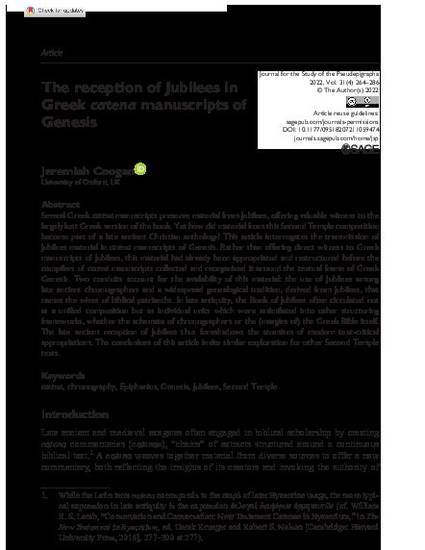
Several Greek catena manuscripts preserve material from Jubilees, offering valuable witness to the largely lost Greek version of the book. Yet how did material from this Second Temple composition become part of a late ancient Christian anthology? This article interrogates the transmission of Jubilees material in catena manuscripts of Genesis. Rather than offering direct witness to Greek manuscripts of Jubilees, this material had already been appropriated and restructured before the compilers of catena manuscripts collected and reorganized it around the textual frame of Greek Genesis. Two conduits account for the availability of this material: the use of Jubilees among late ancient chronographers and a widespread genealogical tradition, derived from Jubilees, that names the wives of biblical patriarchs. In late antiquity, the Book of Jubilees often circulated not as a unified composition but as individual units which were assimilated into other structuring frameworks, whether the schemata of chronographers or the (margins of) the Greek Bible itself. The late ancient reception of Jubilees thus foreshadows the atomism of modern text-critical appropriations. The conclusions of this article invite similar exploration for other Second Temple texts.

This article is distributed under the terms of the Creative Commons Attribution 4.0 License (https://creativecommons.org/licenses/by/4.0/) which permits any use, reproduction and distribution of the work without further permission provided the original work is attributed as specified on the SAGE and Open Access page (https://us.sagepub.com/en-us/nam/open-access-at-sage).